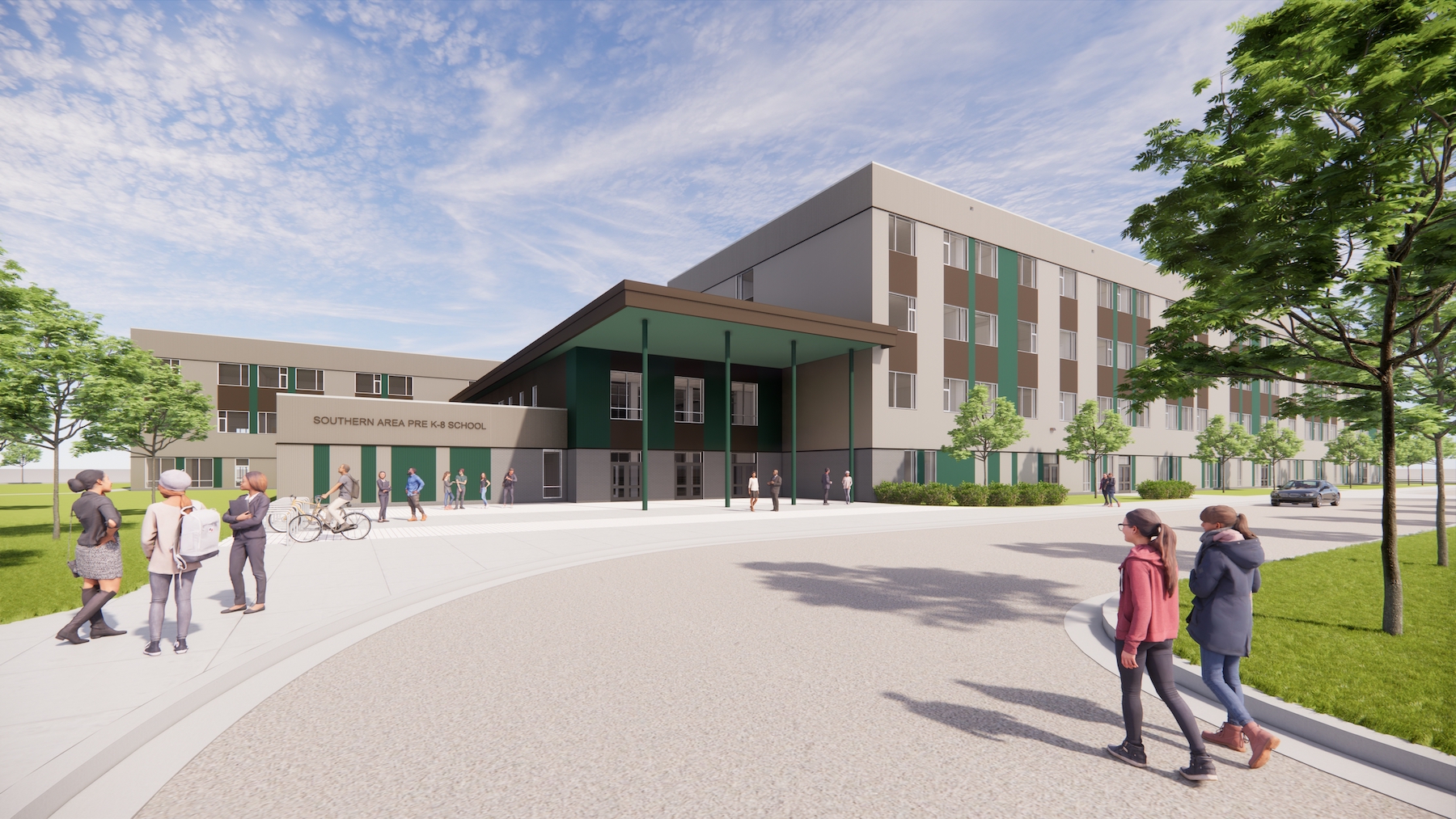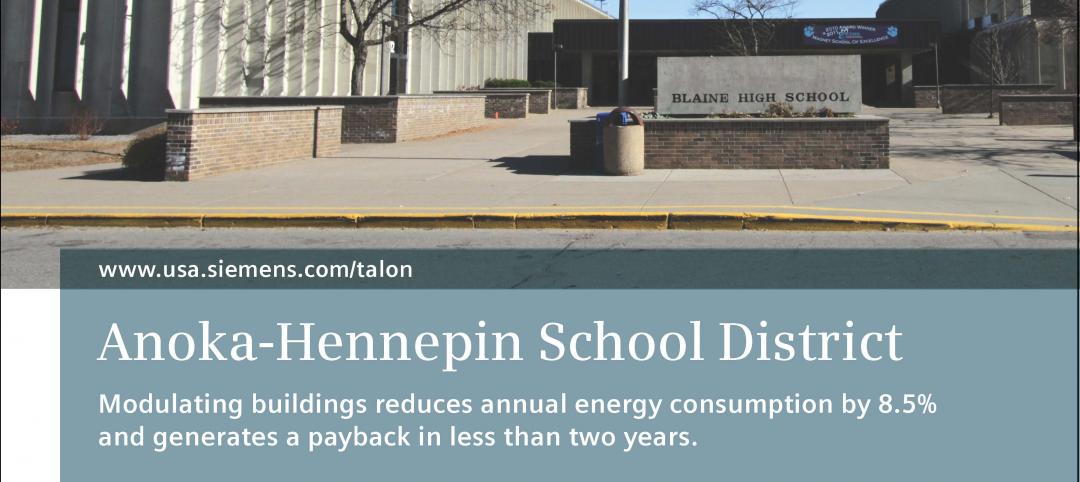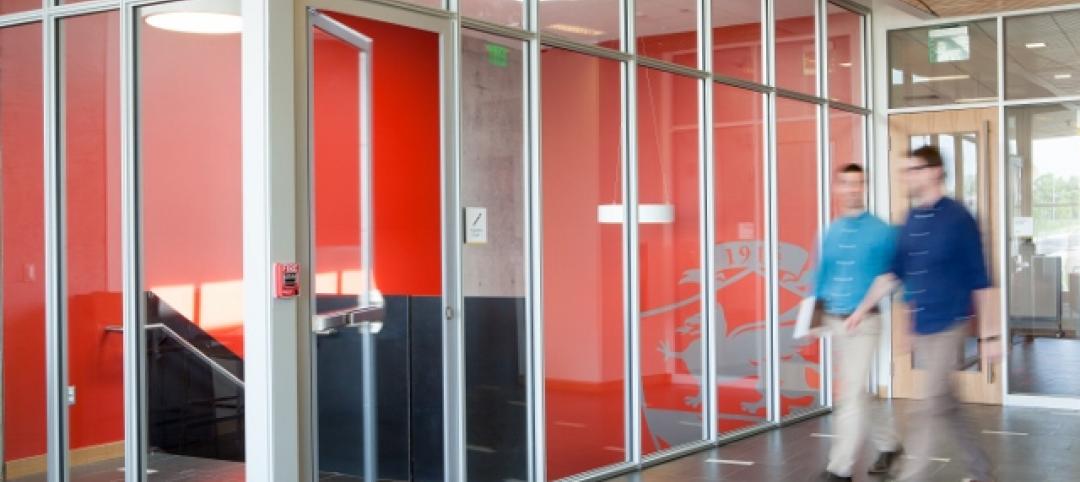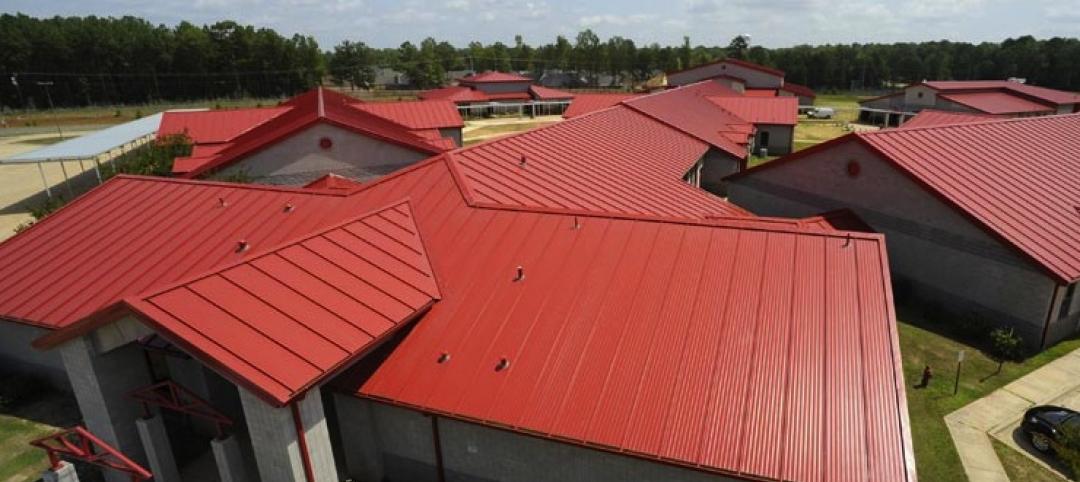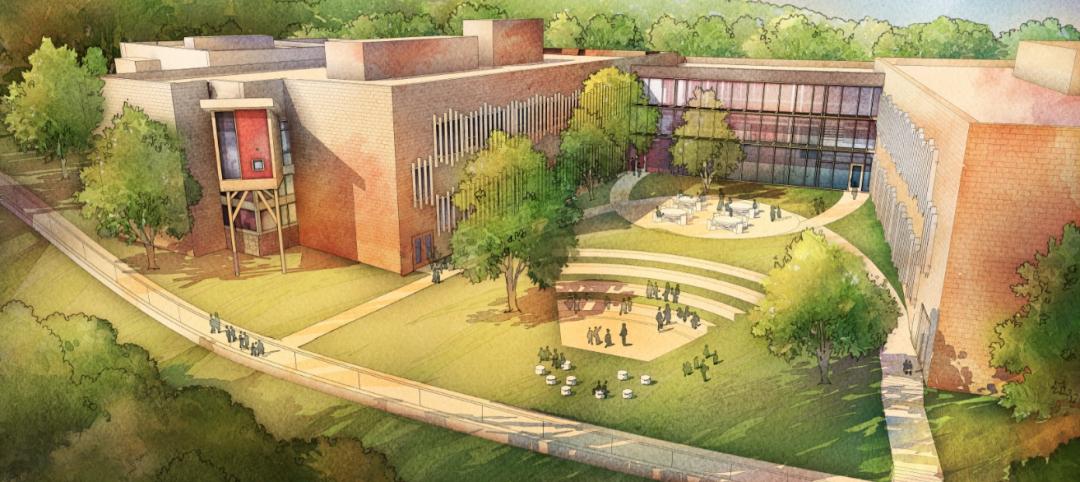Next month, Prince George’s County Public Schools (PGCPS) is scheduled to open the Colin L. Powell K-8 Academy in Fort Washington, Md., a 233,865-ft school with an occupancy of 2,000, whose construction budget is $106.2 million, according to the school district.
This is one of six schools that were built under PGCPS’s Blueprint Schools Program, a collaborative public-private partnership that has significantly reduced the schools’ construction time and cost.
The five other schools, which opened last August, are the 144,800-sf Drew-Freeman Middle School for classes 6-8 in Hillcrest Heights, Md.; the 162,610-sf Hyatt Middle School in Hyattsville, Md.; the 144,800-sf Kenmore School in Landover, Md., for 1,200 6th through 8th graders; the 144,800-sf Sonia Sotomayor Middle School in Adelphi, Md.; and the 144,800-sf Walker Mill Middle School in Capital Heights, Md., with a 1,200-person capacity.
In addition to STEAM labs with 3D printers and robotics, each Blueprint school will feature a video production studio, community clinics, and media center. The schools are solar- and electric vehicle charging-ready, with solar installation slated for completion in the fall of 2024. Hyattsville includes a black-box theater. And Colin Powell will have an elementary library, four Pre-K classrooms, and auxiliary gym, and innovation lab.
Commitment to diversity
The P3, known as Prince George’s County Education and Community Partners (PGCECP), delivered these schools in just 2½ years. Without this P3 agreement, it would have taken 16 years to fund and build them, according to Bob Hunt, Group Managing Director-Government, Education, and Non Profit Advisory for JLL, which served as the technical and financial advisor to PGCPS.
The P3 team includes development and financing members Fengate Asset Management and Gilbane Development Company, Gilbane Building Company (lead design-builder), Stantec (architect and design lead), and Honeywell (lead services provider).
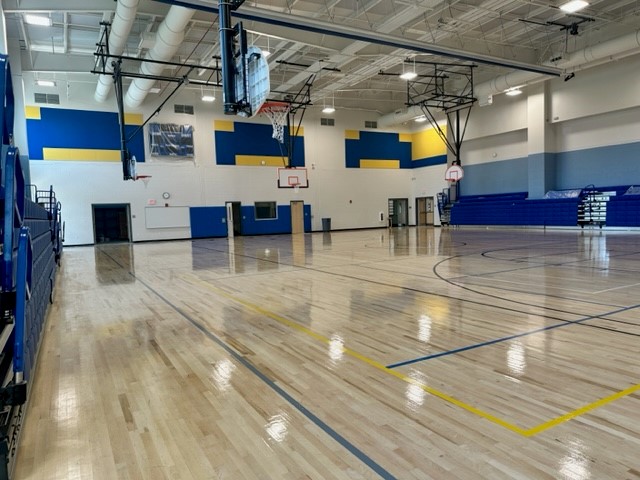
The Blueprint program’s planning, outreach, and support are geared toward increasing opportunities for small businesses, county-based businesses, and minority business enterprises. Scopes of work are created, and larger contracts are unbundled, to expand these businesses’ participation. This includes ongoing prequalification for all anticipated contracts for each key team member.
As of August 2023, PGCECP had exceeded its goal by awarding $134 million, or one-third, of its contracts for the schools built under Blueprint to Minority-owned businesses such as Arel Architects, which is part of the P3’s design team and has a mentor-protégé relationship with Stantec. Warren Builds Construction and Corenic Construction Group have similar arrangements with Gilbane. Three|E Consulting Group, a county-based business, serves as the economic inclusion and compliance team.
The next phase with more partners
Under a traditional design-bid-build contract, PGCPS estimates that the six schools would have cost an aggregate $868.8 million to design and construct. The schools in the Blueprint program were completed for a total of $485.8 million and include 30 years of facilities maintenance from Honeywell, which must adhere to MBE/CBB procurement requirements. PGCPS projects a savings of $170 million over three decades, compared to the traditional model.
Phase II of the Blueprint program will deliver eight more schools that further meet the needs of the district's 133,000 students and nearly 20,000 employees. Prince George’s County Education Collective was recently selected as Phase II’s final bidder. The Collective consists of equity members Plenary Americas US Holdings and Ellis Don Capital; MBE equity member Phoenix Infrastructure Group Investments, lead contractor MCN Build, and lead service providers US Facilities, Ellis Don Facilities Services, and RSC Electrical and Mechanical.
Related Stories
Sponsored | Energy Efficiency | Jan 23, 2015
Rapid payback and reduced consumption with modulating buildings
| Jan 2, 2015
Construction put in place enjoyed healthy gains in 2014
Construction consultant FMI foresees—with some caveats—continuing growth in the office, lodging, and manufacturing sectors. But funding uncertainties raise red flags in education and healthcare.
Sponsored | | Dec 30, 2014
First-class glass: Designing for fire safety in schools
As more students enter the school system each year, designing for fire safety in educational facilities has never been more critical. Fire-rated glazing can be a key part of the solution.
| Dec 28, 2014
AIA course: Enhancing interior comfort while improving overall building efficacy
Providing more comfortable conditions to building occupants has become a top priority in today’s interior designs. This course is worth 1.0 AIA LU/HSW.
| Dec 2, 2014
Nonresidential construction spending rebounds in October
This month's increase in nonresidential construction spending is far more consistent with the anecdotal information floating around the industry, says ABC's Chief Economist Anirban Basu.
Sponsored | | Nov 26, 2014
What’s in a coating?
A beautiful coating on metal products can make a strong statement, whether used on a high-end commercial project or an industrial building. SPONSORED CONTENT
| Nov 17, 2014
Nearly two years after Sandy Hook, the bloodshed continues
It’s been almost two years since 20 first-graders were shot and killed at Sandy Hook Elementary School in Newtown, Conn., but these incidents, both planned and random, keep occurring, writes BD+C's Robert Cassidy.
K-12 Schools | Nov 6, 2014
New Sandy Hook school features could influence security standards
The design of the new Sandy Hook Elementary School on the site of the 2012 Newtown, Conn., school shooting features enhanced security measures—some subtle and others more prominent.
| Nov 3, 2014
ASSA ABLOY announces sponsorship of Safe and Sound Initiative
ASSA ABLOY, the global leader in door opening solutions, has signed on as a platinum sponsor of Safe and Sound, an organization founded by families directly affected by the December 14, 2012 tragedy at Sandy Hook Elementary School.
Sponsored | | Oct 29, 2014
Historic Washington elementary school incorporates modular design
More and more architects and designers are leveraging modern modular building techniques for expansion projects planned on historical sites. SPONSORED CONTENT


